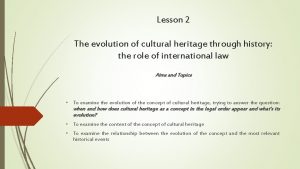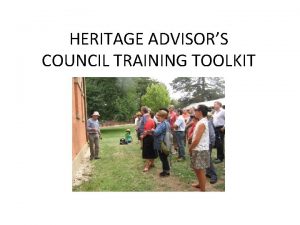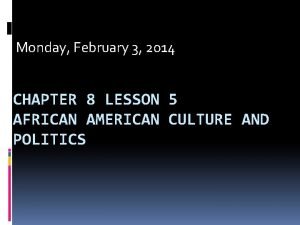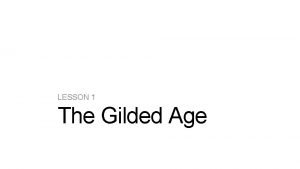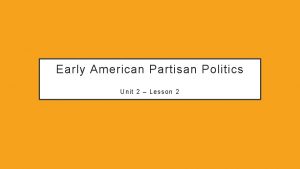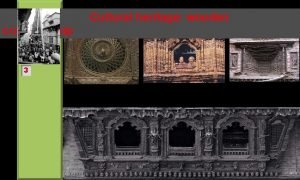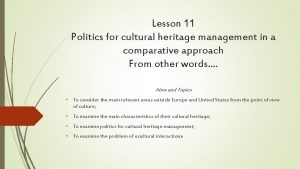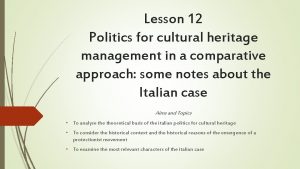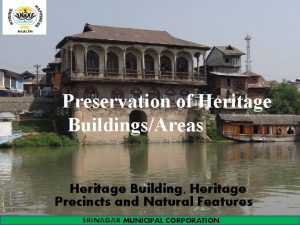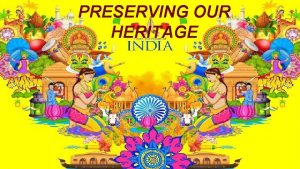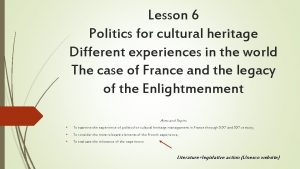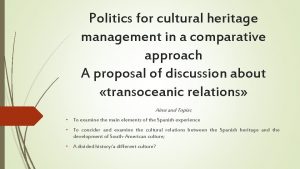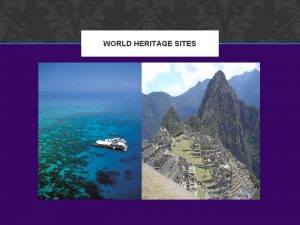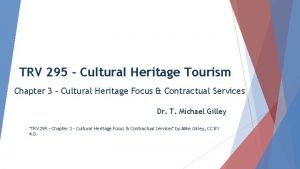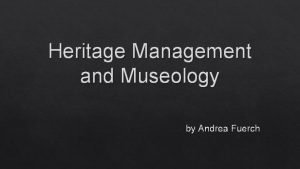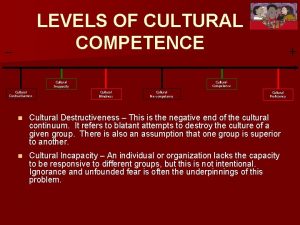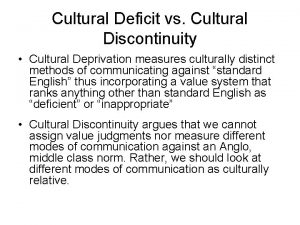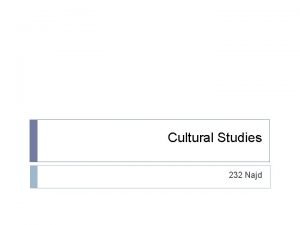Lesson 15 Politics for cultural heritage management in





































- Slides: 37

Lesson 15 Politics for cultural heritage management in a comparative approach: traces from the ancient civilizations of Asia Aims and Topics • To examine the elements of the different systems of Asia; • To examine differences and similarities with regard to the Western world; • To consider the relevance of the Asian cultural heritage today

A different space of analysis Far from/close to the Western World

A first overlook on a great culture The Army prepared for the Mausoleum of the first Chinese Emperor Quin Shi Huang (260 b. C. – 210 b. C. )

Great Wall of China (215 b. C. ) Prohibited City Imperial Palaces of the Ming and Quing

Summer Palace – Imperial Garden in Bejing Lake Kunming

Temple of Ikaruga-Nosako They are considered the oldest wooden buildings in the world Buddha – Temple Todai Ji-Nara 752 b. C.

Temple Kunkaku-Ji – World Heritage List Torji – Temple Itsukushima

Intangible Cultural Heritage

Saihouji – World Heritage List National Parks: Nikko Setonaikai Shiretoko Iriomote - Ishigake


Shanghai Tokyo

Two opposite experiences • A Constitutional Monarchy • An Emperor • A great economy • • • A dictatorship A system governed by the Communist Party A late economic development

The Chinese system The Law 7 June 1930 It was thought as a reaction to the perceived general lack of control over the outflow of antiquities in prior decades; It forbade export of relics; It prevented any person of foreign nationality from engaging in any archaeological excavation in China; It prohibited the transfer of cultural objects to foreigners within China

The Revolution The new symbolic stage Monument to the Heroes of the Revolution – established by the Plenary Conference of the Communist Party in 1949, built between 1952 and 1958

Art as propaganda


The Constitutional basis of the system Constitution of 1949 approaches the matter of cultural heritage in two different articles: a) art. 22: «The State promotes the development of literature and art, the press, broadcasting and television undertakings, publishing and distribution services, libraries, museums, cultural centres, and other cultural undertakings, that serve the people and socialism, adn sponsor mass cultural activities. The State protects places of scenic and historical interest, valuable cultural monuments and treasures and other important items of China’s historical and cultural heritage; b) Art. 119: «The organs of self-government of the national autonomous areas independently administer educational, scientific, cultural, public health and physical culture affairs in their respective areas, protect and cull through the cultural heritage of the nationalities and work for the development and flourishing of their culture.

The concrete situation The State Council The Permanent Committee The National People’s Congress is the supreme body having the power to promote and introduce laws

The legislative development Rules to prevent the exportation of objects of art, peintures, books; Law 24 May 1950: it ruled discovery and exacavation of ancient sites, objects and relics: it prohibited the exportation, but it prohibited also foreign scholars to focalize some fields of research; Rules for the protection of ancient sites, books, monuments and relics; Rules for the protection of ancient buildings; Rules for the protection and administration of cultural asset; it protected in particular: «buildings, sites and objects of historical interest which recall great events of the past, revolutionary movements or important figures, ancient sites, valuable works of art and applied art, regardless of the period to which they belong, archives and representative objects which reflect the social system, social production and the life of society in all periods”

A Cultural Revolution against culture? Marxism – as a materialistic ideology – is against tradition; The main aim is «building the new man» , or the «new citizen» , destroying each trace of previous culture; «Cultural Revolution» was the crucial moment when an effort was promoted to re-build the ideological basis of Chinese communism and re-define the vision, and the moral approach of Chinese people in an ortodox way: after de destalinization, against the destalinization, at the end of the crisis of relationship with Soviet Union

Destruction of cultural relics Zhang Bojun’s collection of ancient books was destroyed in 1966; The Orchid Pavillion was destroyed; Wu Cheng’s house was destroyed

The Law of 1982 Based on marxist ideology and communist issues, it recognizes the social property and the exclusive role od the State in the tutelage; On the opposite side, recognition and classification of cultural objects follow rules which are very similar to rules introduced by the Unesco Convention of 1970 and 1972; Protection is exclusively entrusted to the State and it represents a «national duty» ; It determines the development of a high bureaucracy; Rules are introduced about excavations and to avoid exportation and illicit traffic

Tai mountain

Man of Bejing

Wudang Mountains

Japan: cultural heritage as instrument of the «nation building process» The origins of the protectionist action developed by the State take place in the age of the Meiji dinasty (1868 -1912); It was during this period that the feudal system based on the power of the samurai and the Shogun was destroyed and all the power acquired by the Emperor; At the beginning lots of cultural objects and sites were destroyed representing the past system and ideology: both civil and religious buildings and objects; In the meantime, it was in this feudal period that a certain sensibility focalising the matter of the beauty emerged, recognizing objects of artistic value as «treasures of art»

The «mission Sadanobu» He entrusted to the famous peinter Tani Bonchu a recognition of works of art in Japan. At the end of the recognition works of art were recollected and classified in ten classes, giving a sort of «collection of data» Matsudaira Sadanobu (1758 – 1829) Supreme Military Chief

Influences from the Western world At the end of the feudal period, some important influences were already present, ad in particular: a) In 1855 it was opened in the city of Edo the «Institute for the Western Knowledge» , in particular for the study of foreign languages – Dutch, French, English; b) In 1862 it was transformed in «Institute for the investigation of the Western books» ; c) In 1877 it was acquired under the direction of the University of Tokyo A process of centralization and State-building Foreign influences

The process of centralization A violent action against Buddhism, with the aim to separate it from the Shintoism, with the consequence of the destruction of a large amount of religlious asset; An action of study and investigation focalising the japanese art; in this way it was promoted the recognition and classification of works of art, ancient buildings and sites of historical interest by Machida Hisanari in 1872, with a double aim: a) To know and classify the religious asset to control the process of secolarization introduced at the beginning of the new period; b) To know and classify the cultural asset and the most interesting objects to send to the International Exhibition in Wien of 1873

A model for the development of industrial activities Civilization and Enlightment Rich Nation and Strong Army Industrial Development Cultural objects become model for the industrial production

Foreign influences In 1879 it was created by a group of experts a private association devoted to the protection of cultural objects: the so-called Ryuchicai (Society of the Drake’s Lake) Kuki Ryuichi – Sano Tsunetami; In 1872 -’ 73 it was promoted an important mission of research in Europe and United States by Iwakura Tomomi, and it was published a diary very rich of informations and notes; On the other hand lots of european artists and experts were encharged by the Japanese government to deal specifical studies or researches about different matters and fields: Edoardo Chiossone, Giovanni Cappelletti, Antonio Fontanesi among the italian. Chiossone, in particular, was involved in the mission «Kokka Yoko» (lasting fragrance of the national glory)

The first result The Law of protection of Ancient Temples - 1897 The State recognized for the first time its institutional, legal and financial responsibility in the protection of the national cultural asset; In particular the law established the financial support of the State for the protection of buildings and works of art defined as national treasures (kokuho); It established the protection also of the works of exceptional beauty, consequently considered as «models of art» to be exxhibited in the Museums of Tokyo and Kyoto (this one was created in 1897); It was a process of desacralization and recognition of the cultural values of these buildings and sites; The law remained as the «general law for the protection of cultural asset in Japan» till 1950

Till 1949 Law for the protection of Historical Sites, Panoramic Beauties, Natural Monuments – n° 44/1919; Rules for the application of the Law 44/1919; Law for the protection of National Treasures – n° 17/1929; Rules organizing the Association for the protection of National Treasures; Law for the protection of the Relevant Works of Art; Rules for the Council for the Research around Historical Sites, Panoramic Beauties, Natural Monuments

The Law for the Protection of Cultural Asset 1950 The aim of the Law is «preserving and using cultural asset for the development of Japanese culture, supporting also the cultural development in the world» ; It defines the different categories of cultural asset: a)Tangible Cultural Asset; Act of recognition b) Intangible Cultural Asset; c) Etnographic Cultural Asset; d) Monuments; e) Groups of Historical Buildings Act to limit transformations and management

The structure Agency for Cultural Affairs (1968) Council for the Protection of Cultural Asset Commission for the Tutelage of Cultural Asset under the Ministry of Public Instruction

The structure Some more details Ministry of Public Instruction Department for the Protection of Cultural Asset Director for Cultural Affairs Agency for Cultural Affairs

The structure Division for the Traditional Culture Department for the Protection of Cultural Asset Division for Monuments and Sites Division for the Fine Arts Division for Architecture National Museum of Tokyo National Museum of Kyoto National Museum of Nara National Institute for the Research around Cultural Asset
 Classification of property law
Classification of property law World heritage is our heritage slogan
World heritage is our heritage slogan Sapratibandha daya and apratibandha daya
Sapratibandha daya and apratibandha daya Cultural heritage meaning
Cultural heritage meaning Intangible cultural heritage and sustainable development
Intangible cultural heritage and sustainable development Hudhud chants of the ifugao threats
Hudhud chants of the ifugao threats By passing the edict of milan, constantine _______ .
By passing the edict of milan, constantine _______ . Cultural heritage advisors
Cultural heritage advisors Chapter 8 lesson 5 african american culture and politics
Chapter 8 lesson 5 african american culture and politics The tournament of today
The tournament of today Lesson 2 partisan politics
Lesson 2 partisan politics Kontinuitetshantering
Kontinuitetshantering Typiska drag för en novell
Typiska drag för en novell Nationell inriktning för artificiell intelligens
Nationell inriktning för artificiell intelligens Ekologiskt fotavtryck
Ekologiskt fotavtryck Varför kallas perioden 1918-1939 för mellankrigstiden?
Varför kallas perioden 1918-1939 för mellankrigstiden? En lathund för arbete med kontinuitetshantering
En lathund för arbete med kontinuitetshantering Särskild löneskatt för pensionskostnader
Särskild löneskatt för pensionskostnader Tidbok yrkesförare
Tidbok yrkesförare Sura för anatom
Sura för anatom Vad är densitet
Vad är densitet Datorkunskap för nybörjare
Datorkunskap för nybörjare Tack för att ni lyssnade bild
Tack för att ni lyssnade bild Mall för debattartikel
Mall för debattartikel Autokratiskt ledarskap
Autokratiskt ledarskap Nyckelkompetenser för livslångt lärande
Nyckelkompetenser för livslångt lärande Påbyggnader för flakfordon
Påbyggnader för flakfordon Arkimedes princip formel
Arkimedes princip formel Publik sektor
Publik sektor Jag har nigit för nymånens skära text
Jag har nigit för nymånens skära text Presentera för publik crossboss
Presentera för publik crossboss Jiddisch
Jiddisch Bat mitza
Bat mitza Treserva lathund
Treserva lathund Luftstrupen för medicinare
Luftstrupen för medicinare Claes martinsson
Claes martinsson Cks
Cks Verifikationsplan
Verifikationsplan



